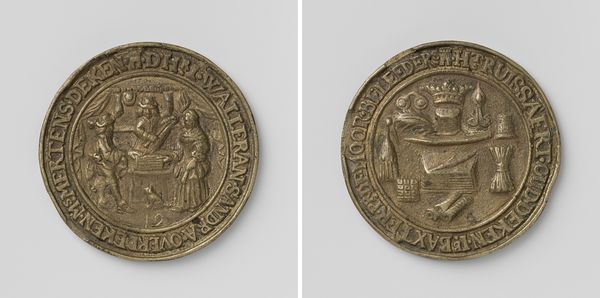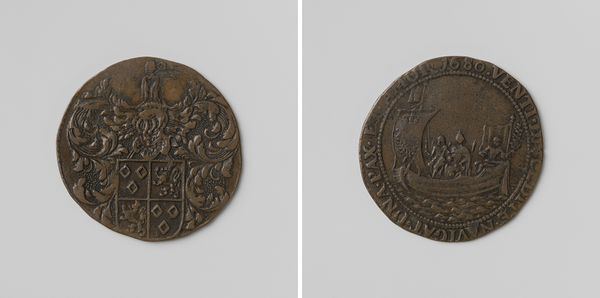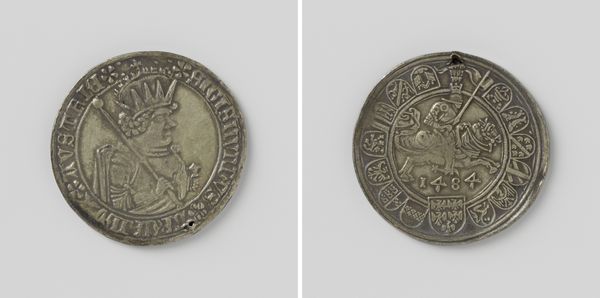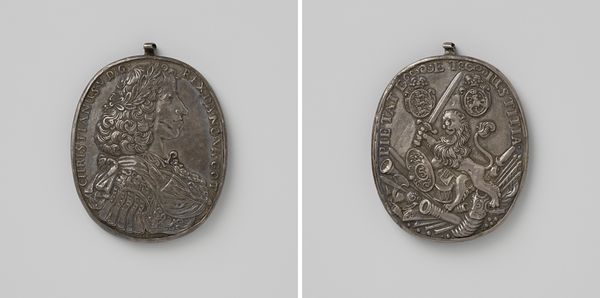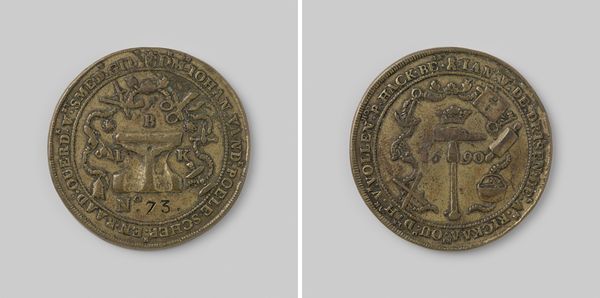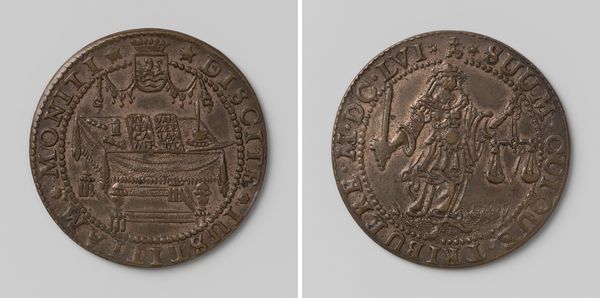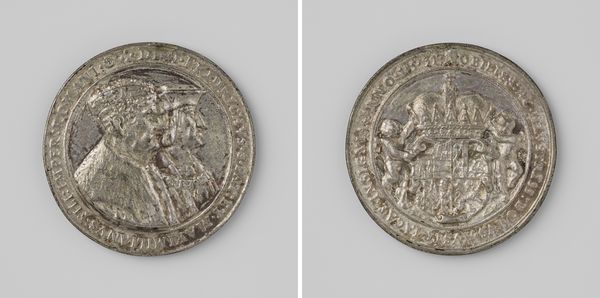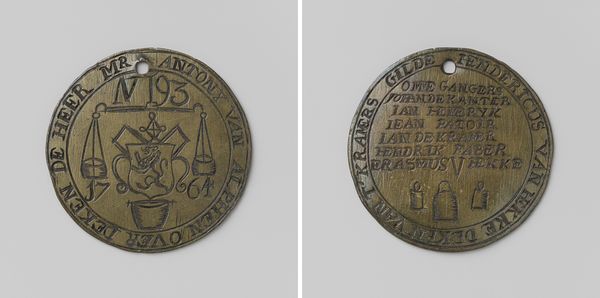
metal, relief, sculpture
#
portrait
#
metal
#
relief
#
11_renaissance
#
sculpture
#
history-painting
#
academic-art
#
miniature
Dimensions: diameter 4.3 cm, weight 15.80 gr
Copyright: Rijks Museum: Open Domain
Editor: This is an intriguing metal relief, a portrait of "Keizer Karel V," created around 1550 by an anonymous artist. It feels almost like a coin, or perhaps a medallion. Given that the Rijksmuseum holds this object, what’s striking about it for you? Curator: The most fascinating thing is its materiality, isn’t it? This isn't painting or even large-scale sculpture; it's a meticulously crafted metal relief, a miniature world forged through labour. Consider the social context: who had the resources to commission such an object, and for what purpose? Was this piece a display of personal wealth or perhaps something used to create an image? Editor: I see what you mean. It feels like it’s beyond just simple art making, perhaps bordering more toward commodity and political authority? Curator: Exactly. Think about the labor involved. This wasn’t mass production; some artisan invested time and skill to translate the power of Charles V into metal. It prompts questions about the hierarchy of art and craft during the Renaissance and how those divisions played out in the workshops of the period. Metal-working as an industry offered new ways of understanding economic status at the time. What message would you say the artist sends to their audience? Editor: Perhaps a message about the accessibility of portraiture at that time, or an early commentary about material culture as it existed in the mid-16th century? Thanks to the analysis on labour and access, this makes me think about that. Curator: Precisely! By focusing on the materials and production, we've moved beyond mere aesthetics to consider this piece as a product of a complex web of social, economic, and even manufacturing forces. It becomes a portal into the lives of both patron and producer. Editor: Absolutely. I definitely gained an entirely new lens by looking closely at the material context here.
Comments
No comments
Be the first to comment and join the conversation on the ultimate creative platform.

